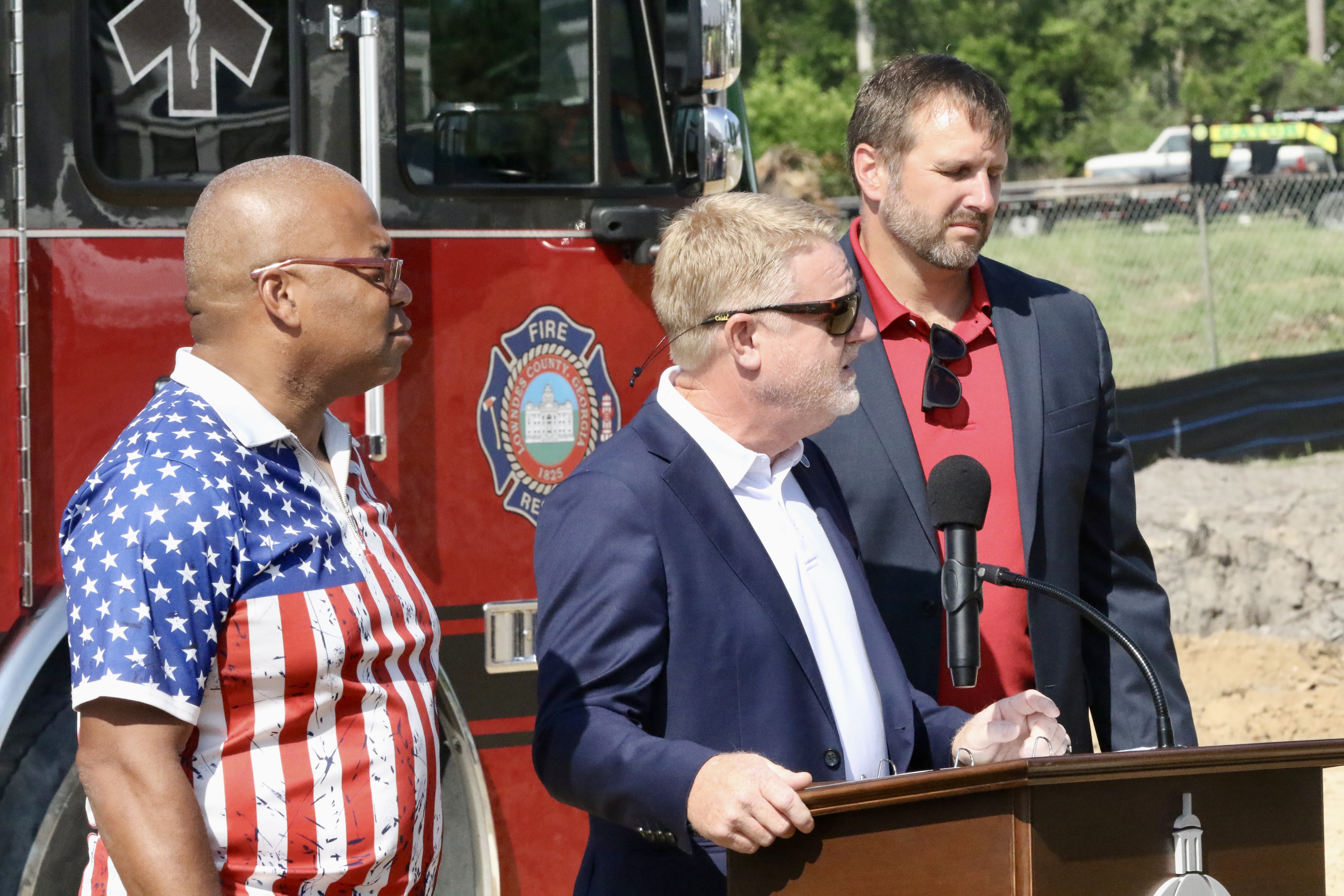Order in the Court
Published 12:51 am Wednesday, August 11, 2010

- REFLECTIONS OF A COURTHOUSE: Times photographer Jonathan Chick caught this image of the Lowndes County Courthouse reflected in a puddle after a rainstorm last year. Court offices are moving from the 105-year-old Lowndes landmark to the new judicial complex.
The move from the courthouse to the new judicial complex marks the end of an era for Lowndes County and Downtown Valdosta.
Trending
Since opening its doors in 1905, the Lowndes County Courthouse has served as the site for countless dramas and the dispensation of justice and punishment.
It has witnessed generations of weddings.
The courthouse has documented the legal and land transactions of the region.
There are many things it used to be that it hasn’t been for many years, such as the courthouse was once home to the county jail.
And there are many features of the present-day courthouse which were undreamed of in 1905, such as a few structural additions, electronic security systems and central air-conditioning.
Of course, in 1905, the courtroom’s many electric ceiling fans were considered to be the cutting edge in early 20th century air conditioning. Even though as some records observe, the fans did little to take the humid edge off of a South Georgia summer afternoon.
Trending
In the late journalist Bill Boyd’s book, “Blind Obedience,” under the heading of July 17, 1905, which marked the first day of the courthouse’s first murder trial, he wrote, “Although the new Lowndes County Courthouse — which had been completed in the spring — was equipped with the latest in electric fans, those contraptions simply moved the humid air around.”
Still, it was, and is, a beautiful courtroom of pine and oak, built in a style reflecting the best designs of the day.
In 1905, the courthouse represented a new commitment to the longevity of Valdosta.
The first courthouse was built on the southwest corner of Ashley and Valley streets. By 1871, the first courthouse on the current downtown square was built. By 1875, the first brick courthouse was built on the same spot. It served as the courthouse for 30 years until the county approved the construction of a new courthouse in 1904; it opened a year later.
The courthouse was built at a crucial time in Valdosta’s history, when the town was in the process of becoming a city. Valdosta was only 40 years old at the turn of the 20th century. Lowndes County had two county seats prior to Valdosta. So, by the age of 40, an aura of permanence was settling upon the city.
At the beginning of the 20th century, Valdosta hosted the Georgia State Fair and became the nation’s smallest town to operate a trolley. In 1901, the city passed an ordinance allowing Southern Bell Telephone Company the use of public streets for installing phone poles and electrical conductors.
In 1903, “the first paving of Hill Avenue was begun with the use of vitrified brick with granite curbings,” according to “History of Lowndes County.” In 1904, another project paved sidewalks on Patterson and Ashley streets from Atlantic Coast Line to Valley Street and Central Avenue from Toombs to Ashley. This same year, Postal Telegraph Company installed lines along several city streets.
By 1905, Dr. J.M. Smith and Dr. A.G. Little converted a residence along Valley Street into a downtown hospital, starting a trend of building new hospitals during the next few years.
In 1904, a fire destroyed the First United Methodist Church at the corner of Patterson and Valley streets. This fire threatened “numerous buildings in that section,” according to The Valdosta Times in February 1904. “The sparks and flying embers fell like hail on wooden structures two or three hundred yards away and it looked as though a general conflagration would result.”
The church built the sturdier structure that still stands downtown today. Many area churches began replacing wooden churches for brick churches during this time period.
The city built for permanence and the courthouse reflected this spirit.
In its earliest days, the new courthouse served as headquarters for a drama that gave Valdosta’s reputation a tinge of notoriety.
A long-running feud between two Hahira settlers led to the violent deaths of two youngsters and the arrest of the other family’s patriarch, his sons and a farm hand. The subsequent trial was a media sensation for the era with newspapers across the state sending reporters to cover the case.
This trial is considered by many historians to be the first murder case heard in the Lowndes County Courthouse. People filled the courtroom’s 125 seats on the floor and in the balcony. Many local folks believed they’d be able to stand along the walls and in the aisles to watch this trial as they had in the old courthouse. But the judge would not allow this practice in the new courthouse.
Interest in this trial also marked the change from The Valdosta Times, a twice-weekly newspaper, to becoming The Valdosta Daily Times.
Five years ago, during the centennial anniversary of the Lowndes County Courthouse, Southern Judicial Circuit Judge H. Arthur McLane said, “We have been blessed and in a way this courtroom is a microcosm of our community. The point is this courtroom still serves as a focal point for our community where people can come defend their rights and responsibilities. This is a great legacy that I think will carry us on into the next 100 years.”
Though the Lowndes County Courthouse concluded its trial career with a murder case last week, this legacy will continue in the new judicial complex.




